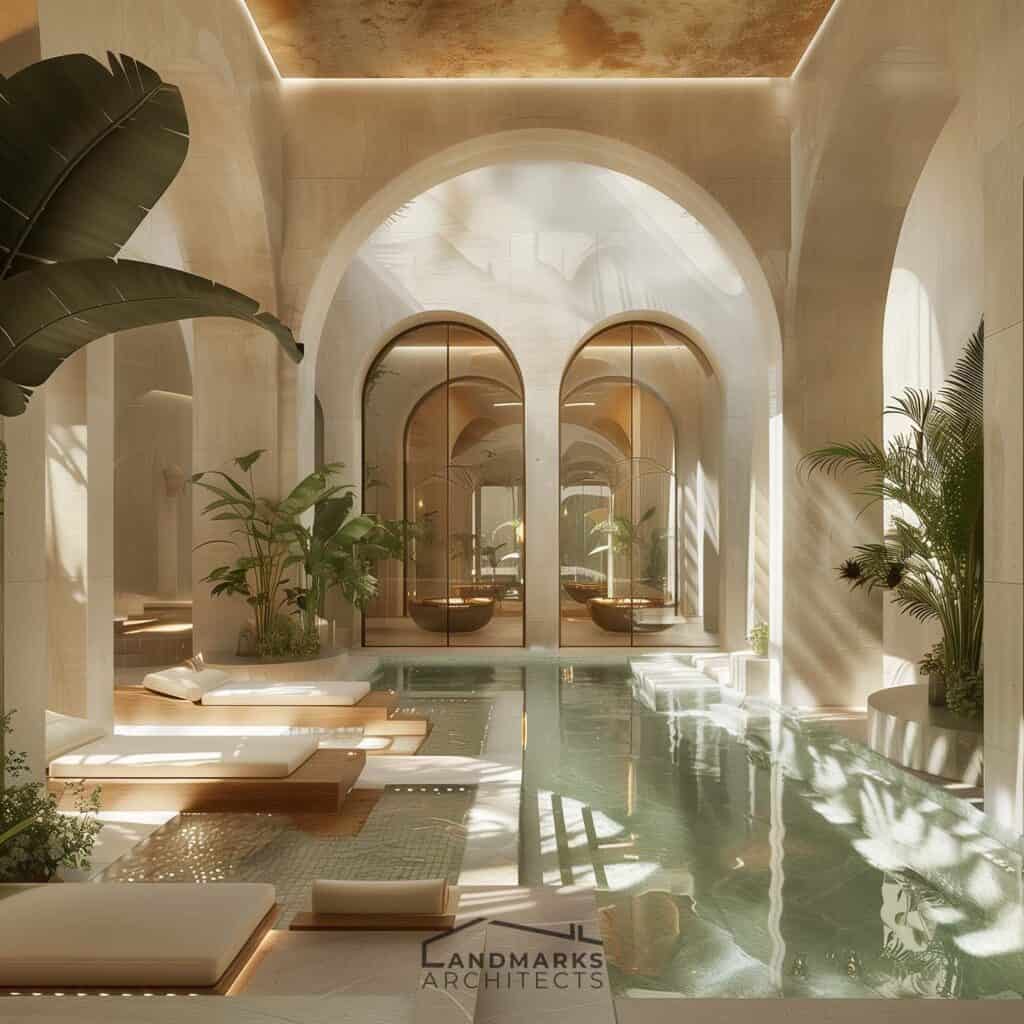
Welcome to the world of tranquility and rejuvenation amidst the bustling chaos of modern life. In an era where the pace of society is relentless, the quest for moments of peace and relaxation has become increasingly vital. It is against this dynamic backdrop that the wellness industry has thrived, with spas emerging as sanctuaries of solace and self-care.
In this article, we’ll unravel the intricate elements that come together to compose the serene ambiance of a spa environment, transforming it into a holistic wellness center. From the comforting embrace of natural tones to the luxurious comfort of ergonomic furnishings, we will explore the meticulous curation of every detail, crafting an oasis of tranquility. Join us as we investigate the world of spa design, where every element is meticulously curated to enhance the guest’s experience and nurture their sense of well-being.
Understanding the Purpose of a Spa
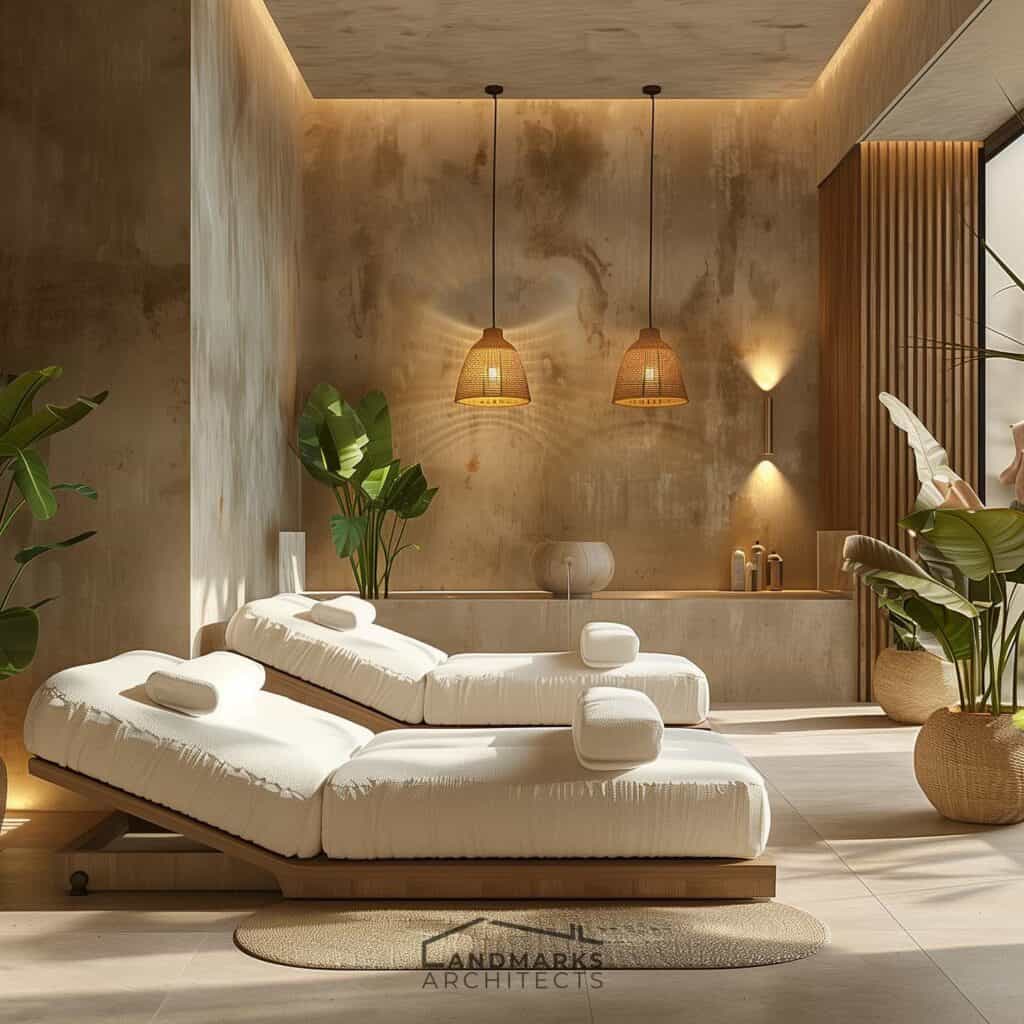
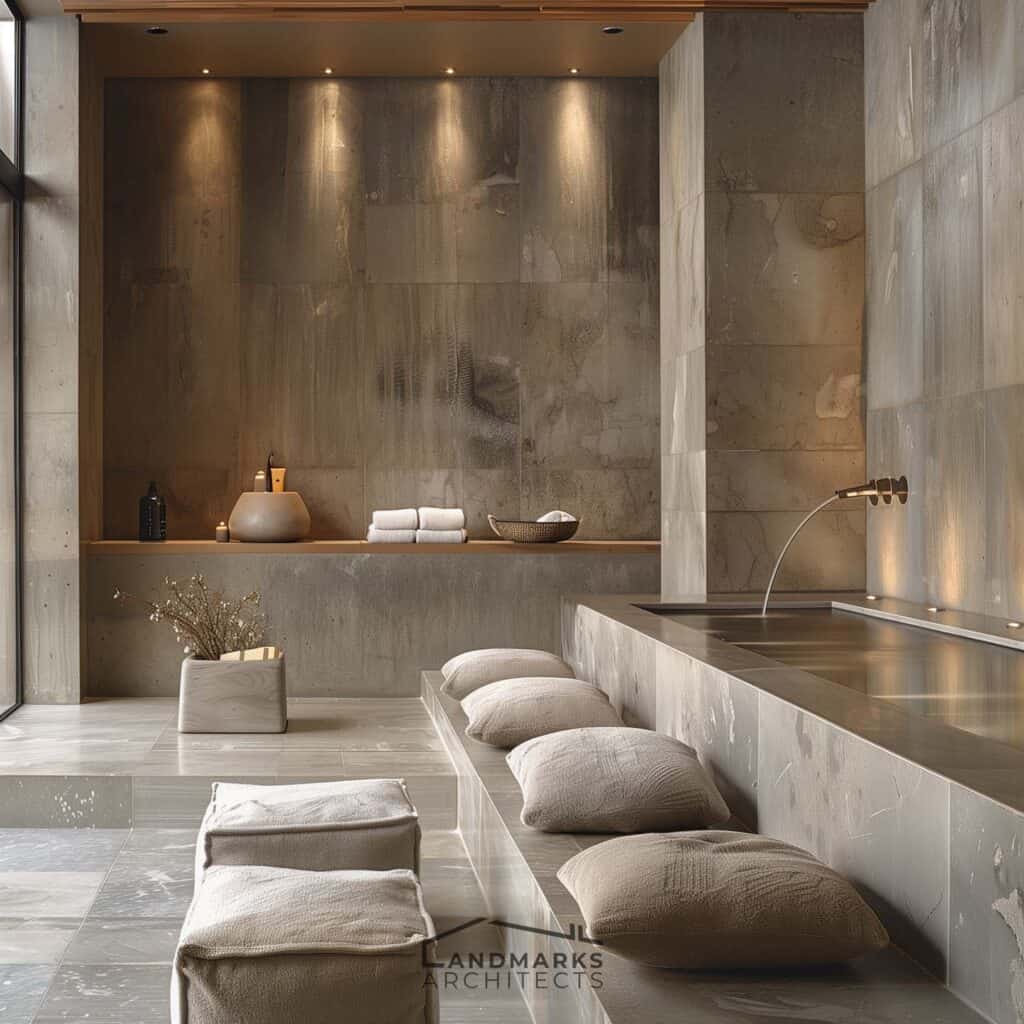
A spa transcends mere aesthetics; it embodies a philosophy centered on holistic well-being. Within its walls, guests seek respite from the stresses of daily life, yearning for a space where they can indulge in relaxation and rejuvenation. Therefore, the fundamental objective of the spa interior design concept is to cultivate an environment conducive to these aspirations. From the moment a guest steps foot into the spa, every element, from the color scheme to the layout, is meticulously curated to evoke a sense of tranquility and well-being.
Key Elements of Spa Interior Design
1. Color Scheme and Lighting
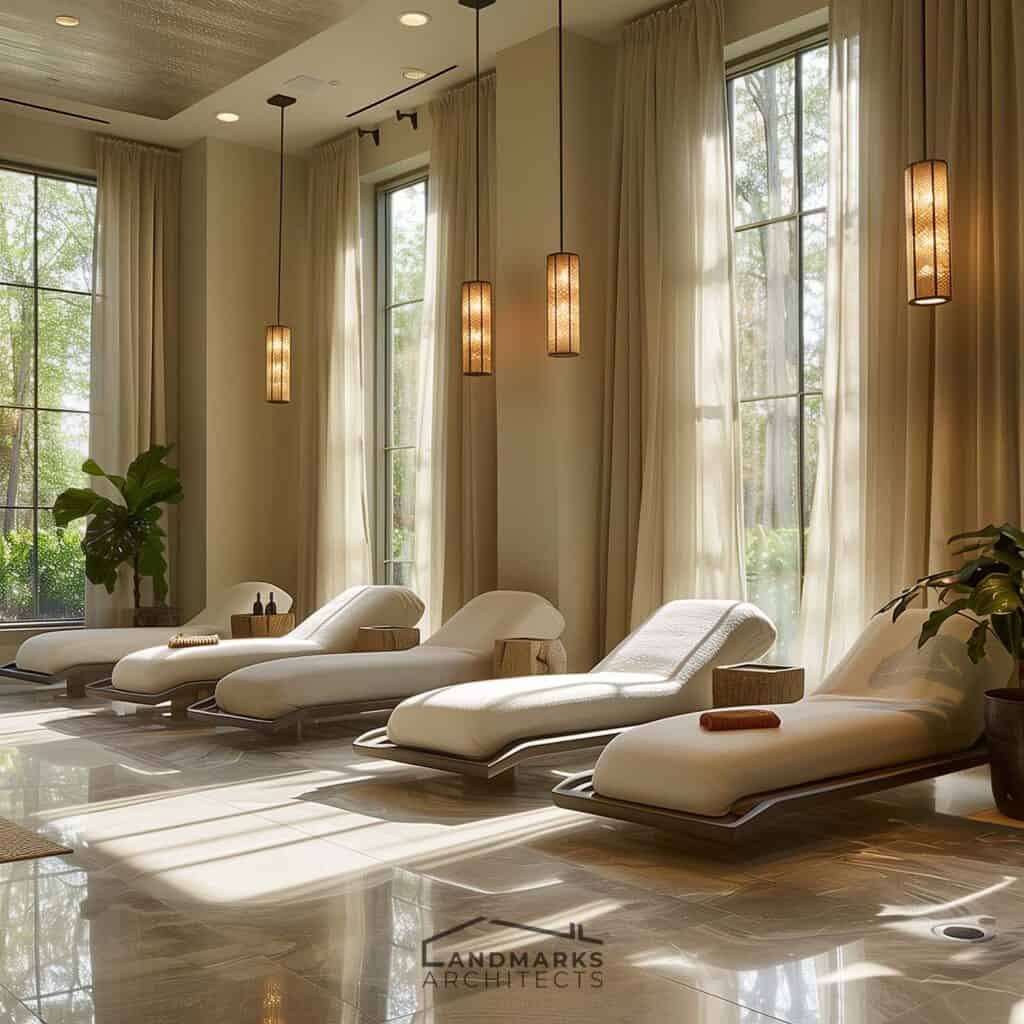
The palette of a spa consists of soft neutrals, pastels, and earth tones, which dominate, creating a calming backdrop that soothes the senses. Complementing these hues is the strategic use of natural light, which filters through windows, illuminating the space with a soft, ethereal glow. Artificial lighting, too, plays a crucial role, carefully orchestrated to enhance the ambiance without overwhelming the senses.
2. Comfortable Furnishings
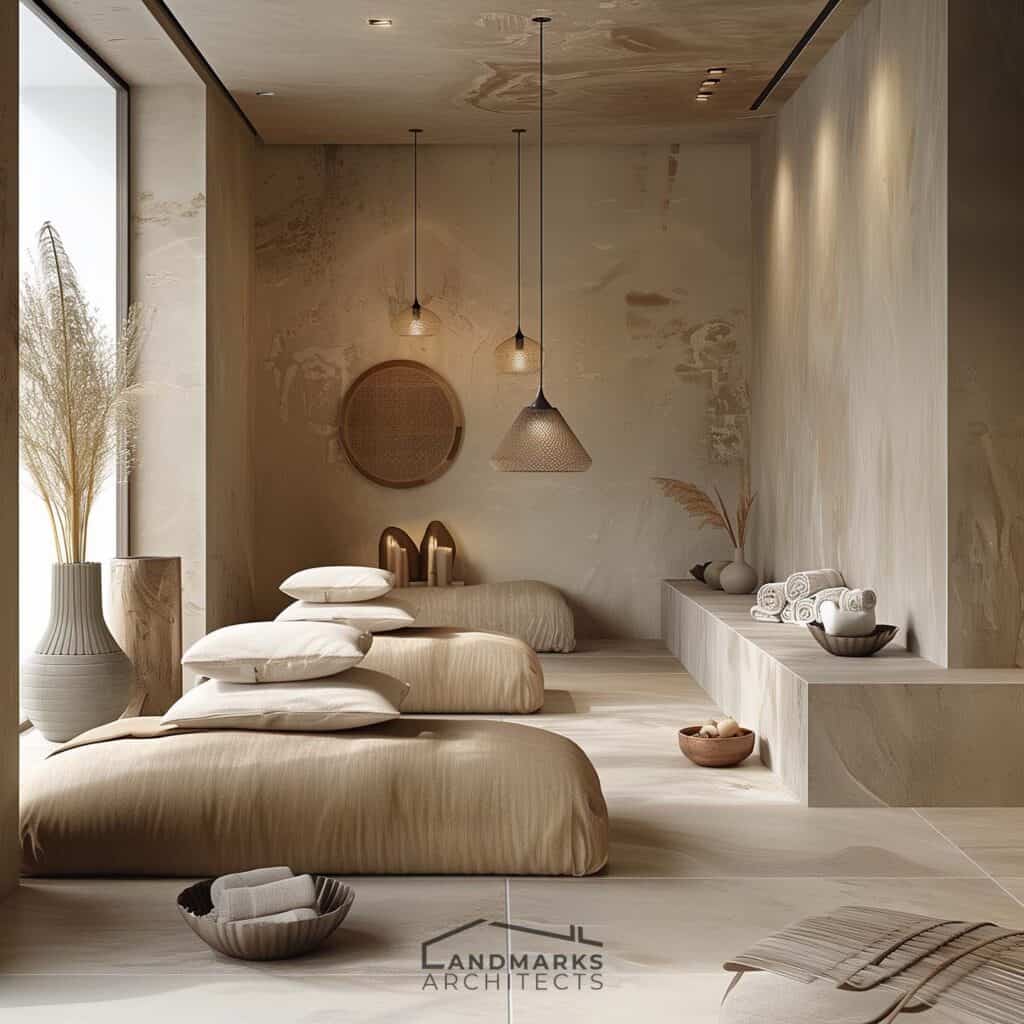
Central to the spa experience is the notion of comfort. Plush seating, cozy rugs, and luxurious linens beckon guests to unwind and indulge in moments of relaxation. Ergonomic furniture, such as reclining chairs and massage tables, further elevate the experience, ensuring that every aspect of the spa is designed with the guest’s comfort in mind.
3. Natural Elements
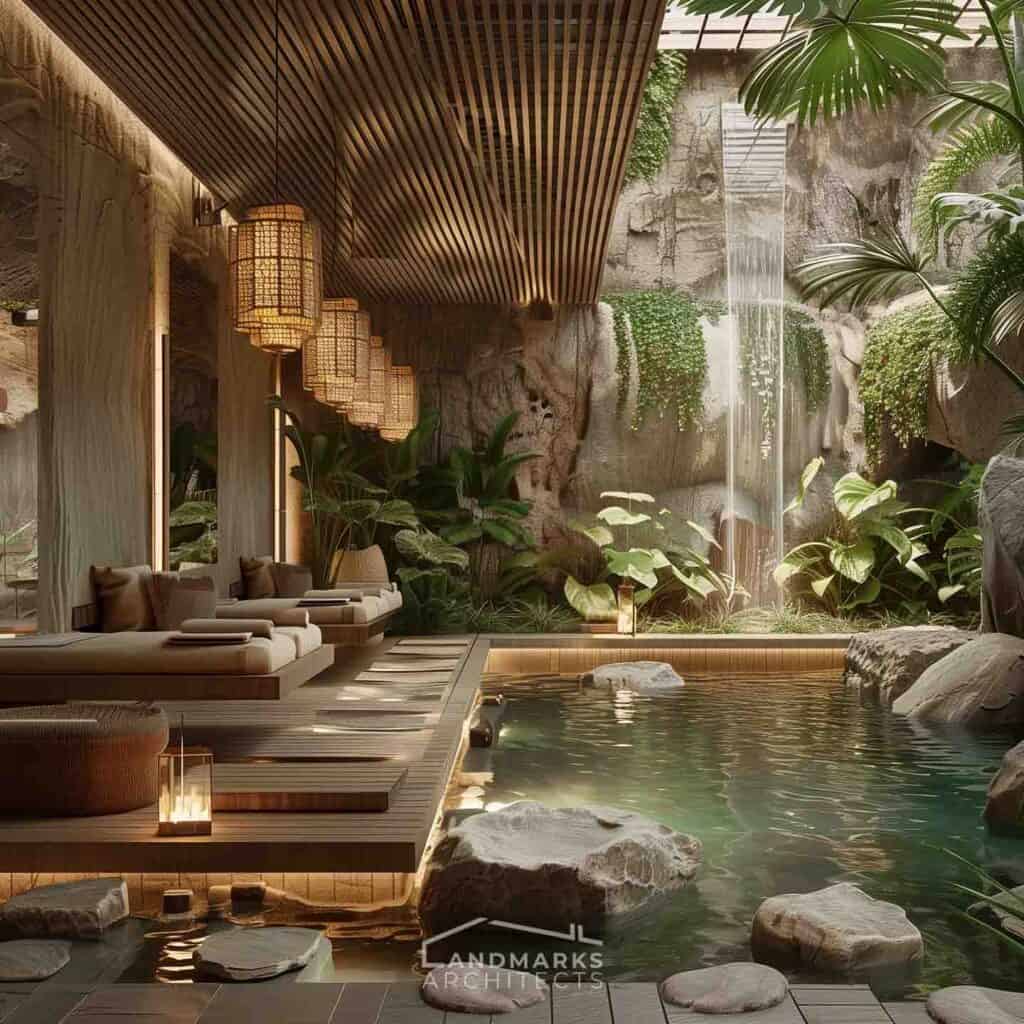
In the embrace of nature lies the essence of serenity. The spa interior design concept embraces this philosophy by incorporating natural materials such as wood, stone, and bamboo. These elements not only evoke a sense of connection to the natural world but also imbue the space with a timeless elegance. Indoor plants and greenery further enhance the ambiance, improving air quality and infusing the spa with a rejuvenating vitality.
4. Spa Facilities Layout
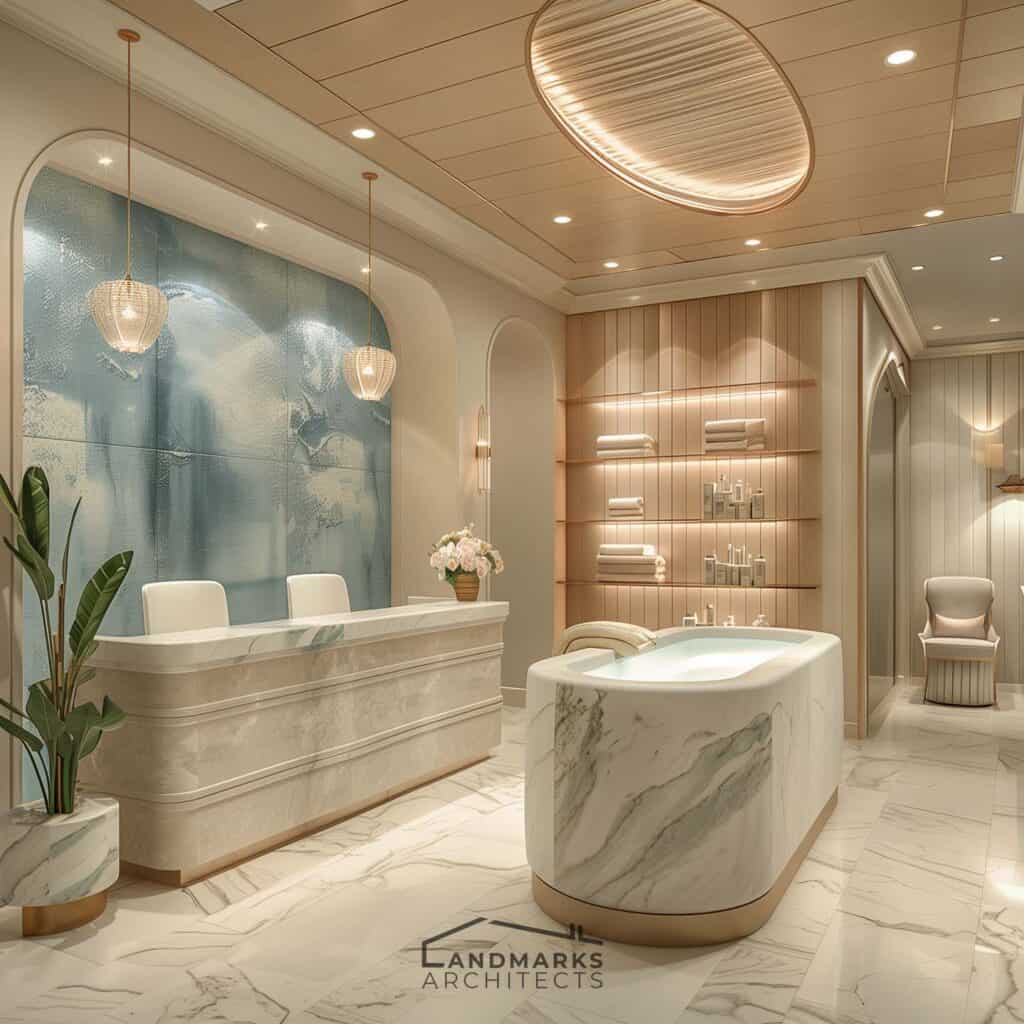
The layout of a spa is more than just a logistical arrangement. From the reception area to the treatment rooms and relaxation lounges, every space is meticulously planned to ensure a seamless flow of guests. Privacy, accessibility, and functionality are paramount considerations, ensuring that every aspect of the design enhances the guest’s experience.
5. Aromatherapy and Fragrance
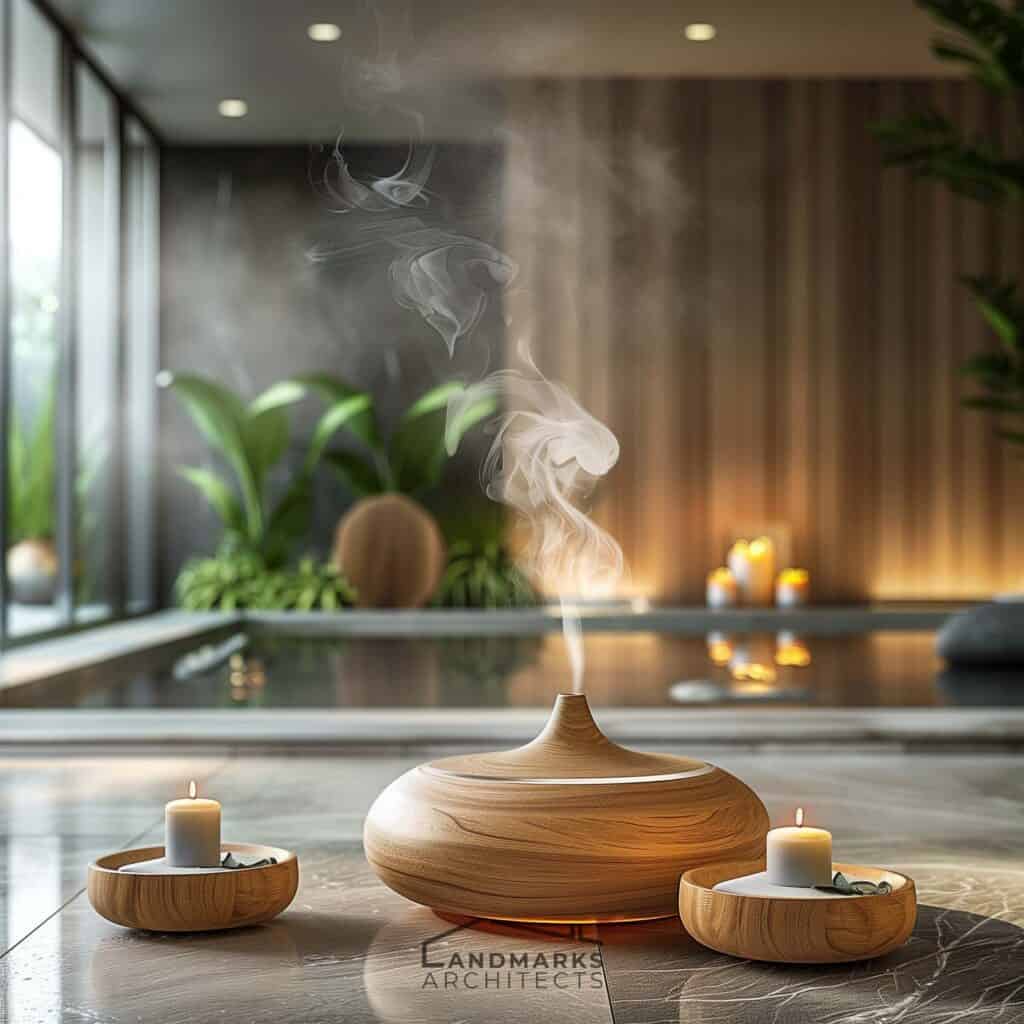
A scent is a powerful tool for creating ambiance and evoking emotions. In the domain of spa interior design concepts, aromatherapy takes center stage, with essential oils and natural fragrances infusing the air with notes of tranquility. Scent diffusers, candles, and incense further enhance the sensory experience, enveloping guests in a cocoon of serenity.
6. Soundscapes and Acoustics

In the pursuit of relaxation, silence reigns supreme. Spa’s interior design concept embraces this notion by prioritizing soundproofing and creating tranquil auditory environments. Soothing music, nature sounds, or white noise permeates the air, melting away the stresses of the outside world. Sound-absorbing materials and architectural features further minimize noise pollution, ensuring that guests are enveloped in a serene cocoon of tranquility.
7. Texture and Sensory Experiences
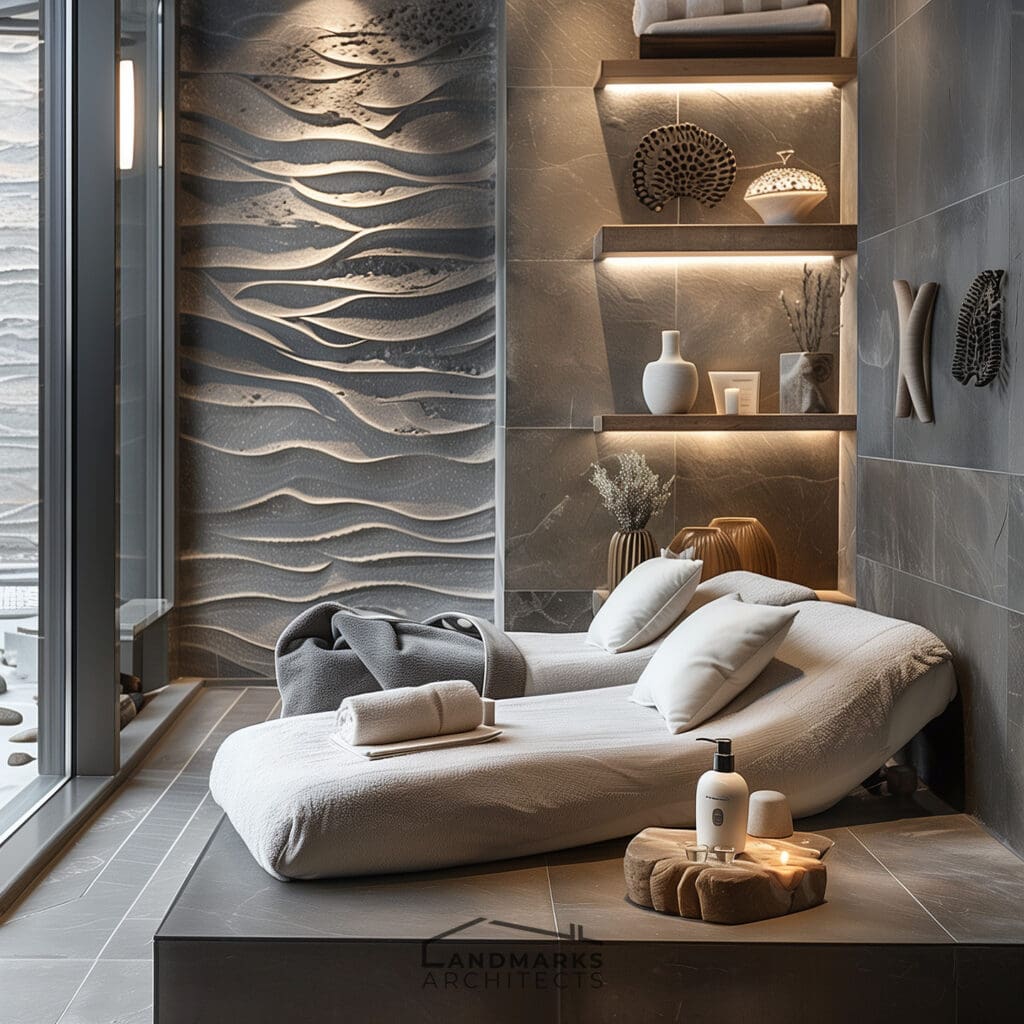
The tactile domain is a playground for the senses, where soft fabrics, textured walls, and smooth surfaces engage in a symphony of sensations. The spa interior design concept harnesses the power of texture to create mesmerizing experiences, from the gentle caress of a plush robe to the invigorating touch of a hot stone treatment.
8. Art and Décor
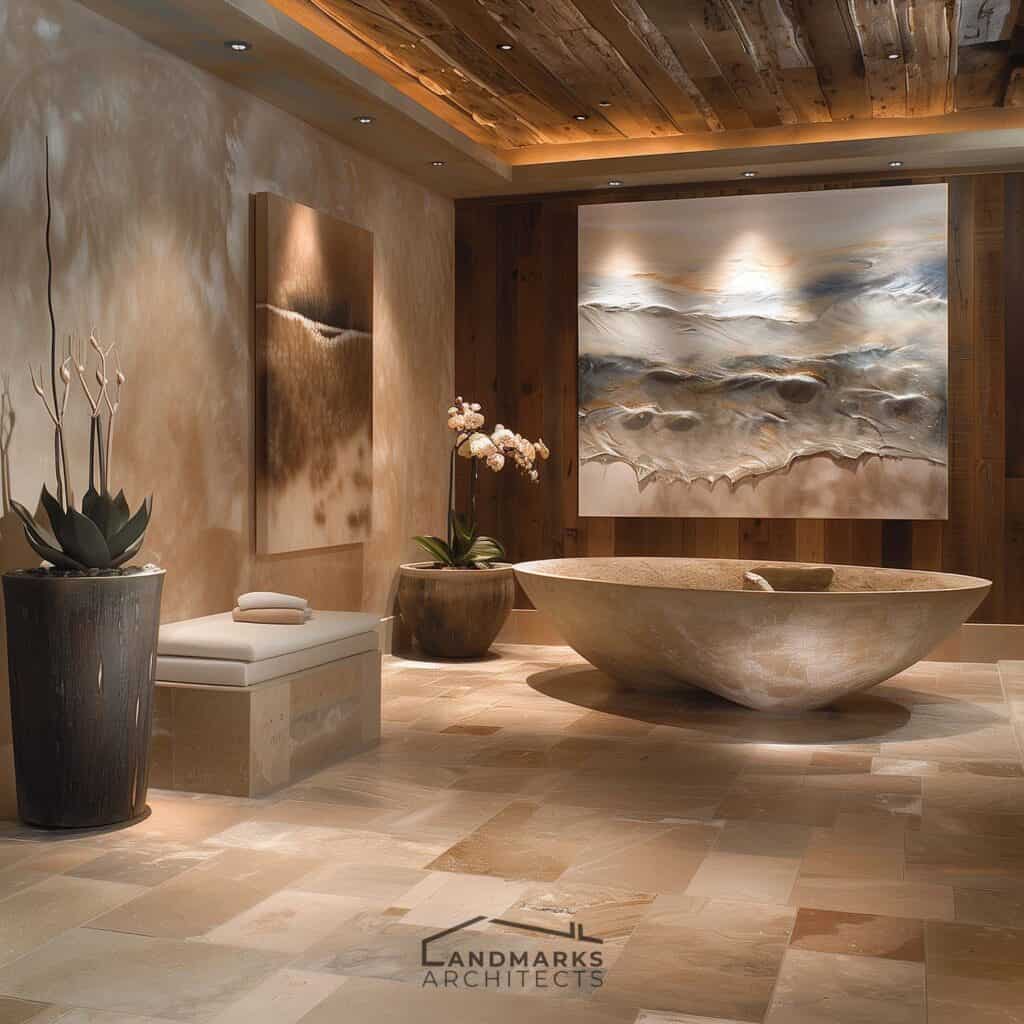
Art serves as the soul of the spa, infusing the space with beauty and inspiration. Sculptures, paintings, and decorative accents adorn the walls, each piece chosen to evoke feelings of relaxation and well-being. Whether it’s a serene landscape or an abstract expression of tranquility, art plays a pivotal role in shaping the ambiance of the spa.
Innovative Design Trends
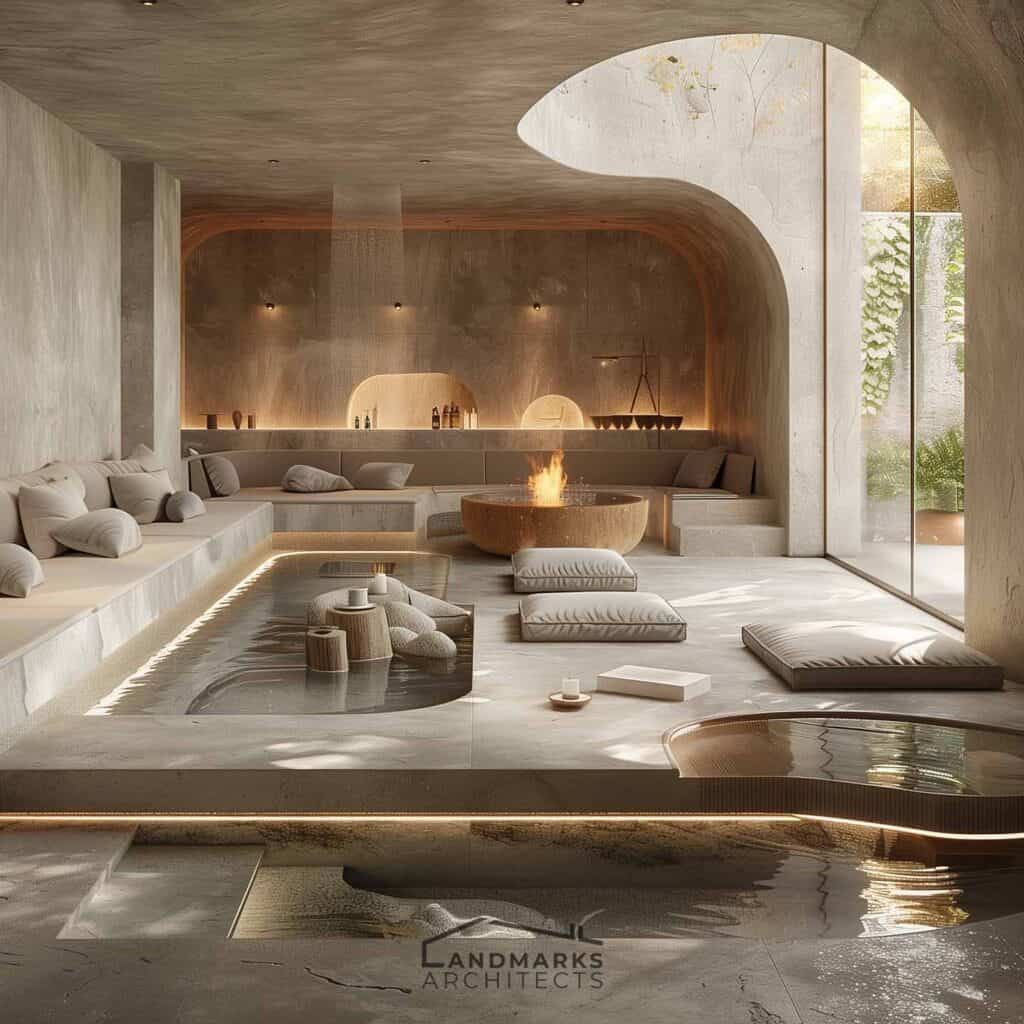
As the wellness industry continues to evolve, so does the spa interior design concept. Minimalist aesthetics, biophilic designs, and sustainable practices are just a few of the trends shaping the landscape of spa design. Water features, fireplaces, and meditation pods offer innovative solutions for creating immersive experiences, while technology integration brings a touch of modernity to traditional spa environments. Eco-friendly design solutions, such as solar panels and recycled materials, underscore the spa’s commitment to sustainability and well-being.
Client-Centered Design
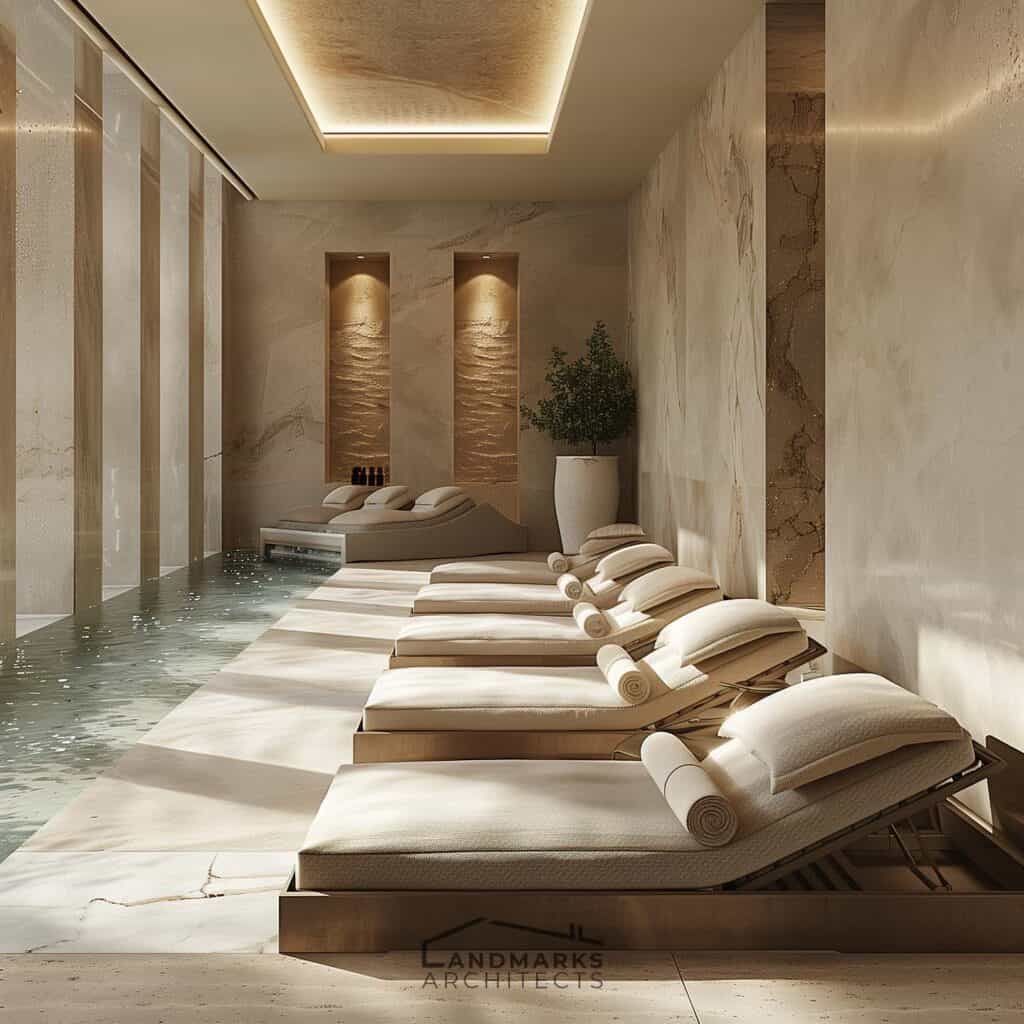
At the heart of the spa interior design concept lies a deep understanding of the clientele it serves. Whether designing for a luxury resort or a neighborhood wellness center, it is essential to tailor the design to meet the specific needs and preferences of the guests. Inclusivity and accessibility are paramount considerations, ensuring that every guest, regardless of ability or background, can fully enjoy the spa experience.
Holistic Wellness Design
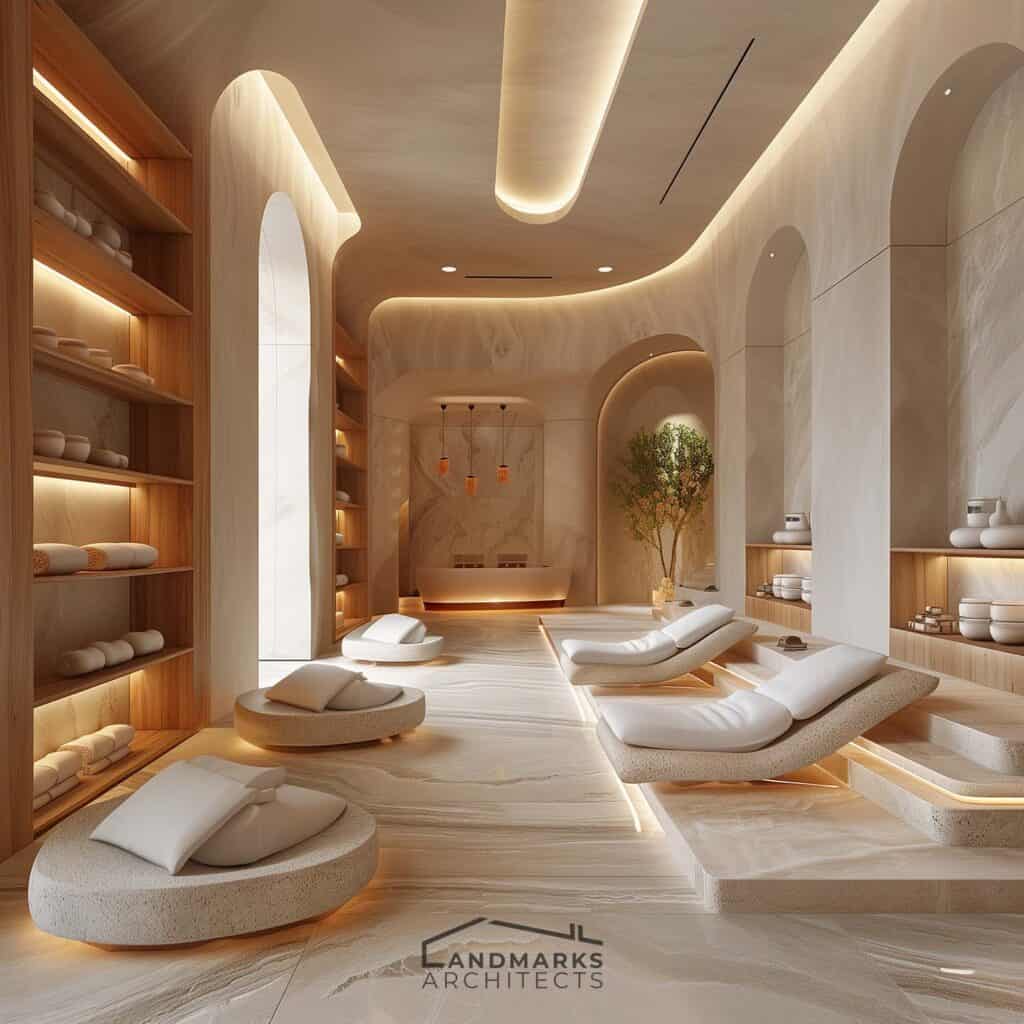
Wellness is not merely the absence of illness but a state of holistic well-being encompassing mind, body, and spirit. The spa interior design concept embraces this philosophy, integrating spaces for yoga, meditation, and mindfulness practices. Collaboration with wellness experts, including nutritionists, fitness trainers, and holistic therapists, ensures that the spa offers a comprehensive approach to well-being, nurturing guests on their path to optimal health and vitality.
Practical Tips for Implementing Spa Interior Design
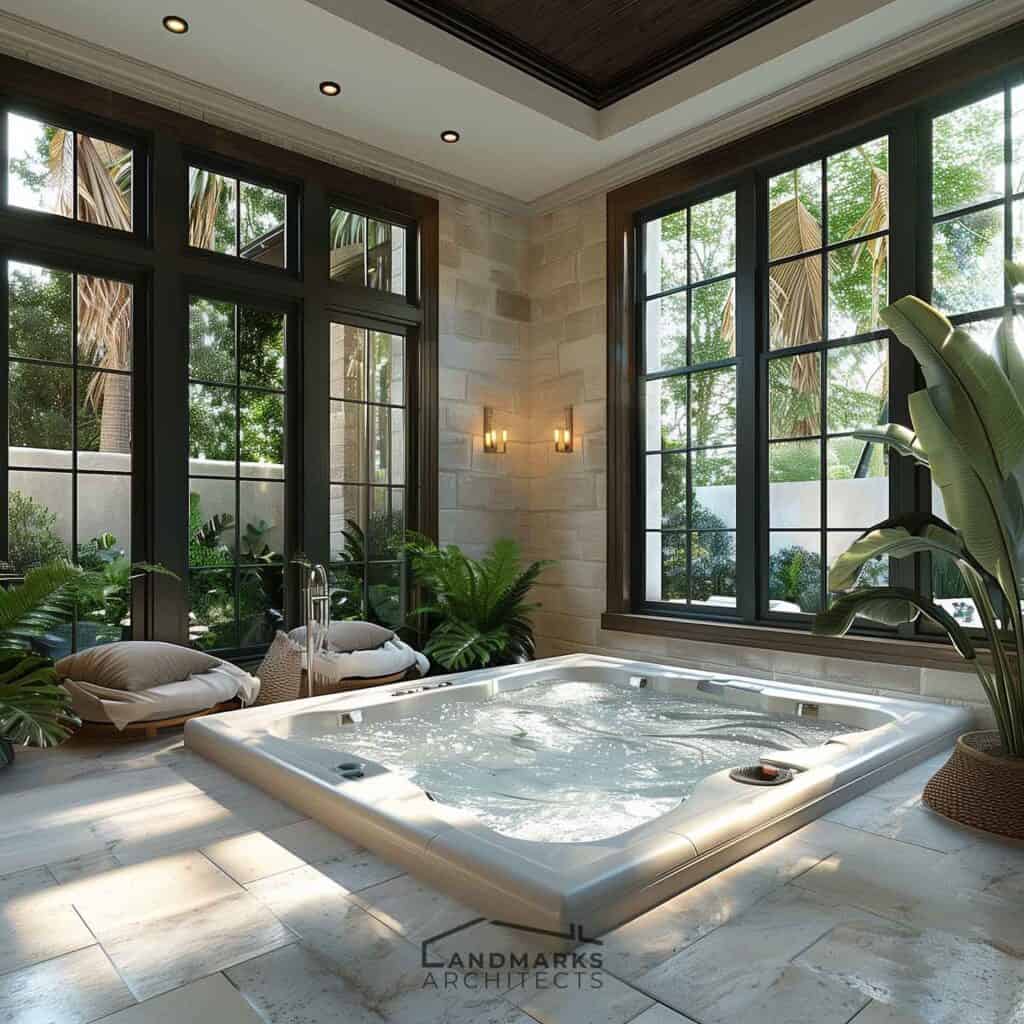
For spa owners and designers undertaking a design venture, practicality is the key. Budgeting, sourcing materials, and collaborating with contractors are essential considerations that can make or break a project. Regular maintenance and updates are equally important, ensuring that the spa maintains its serene and inviting atmosphere for years to come.
Spa Interior Design Concept: A Recap
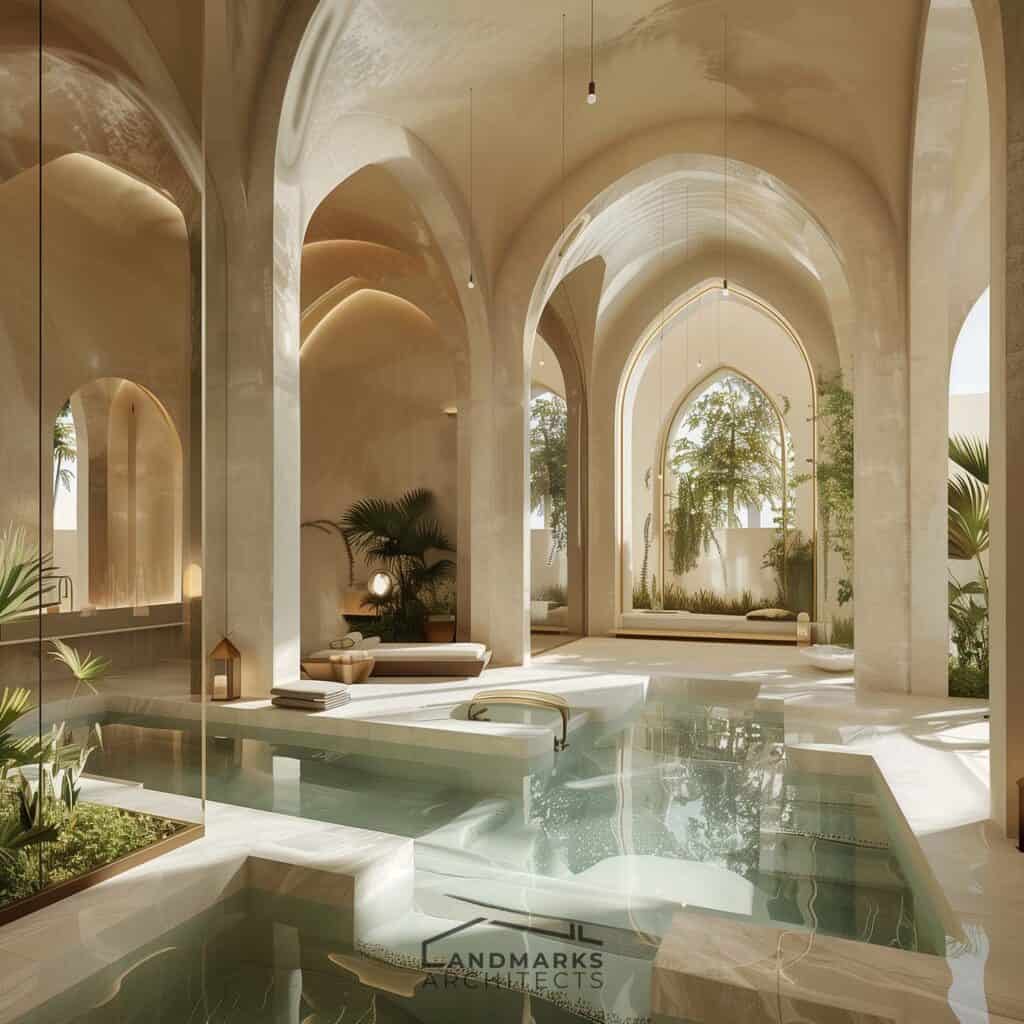
In the fast-paced world we inhabit, moments of serenity are rare treasures to be cherished. The spa interior design concept offers a sanctuary where guests can escape the stresses of daily life and reconnect with their inner selves.
By embracing natural tones, comfortable furnishings, and holistic wellness design ideas, spas create captivating experiences that nourish the body, mind, and spirit. As we look to the future, let us continue to prioritize comfort, functionality, and aesthetics, ensuring that every spa embodies the essence of well-being and tranquility.










